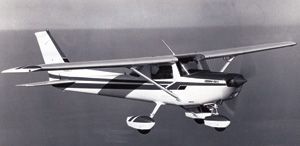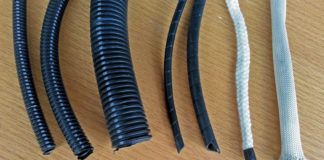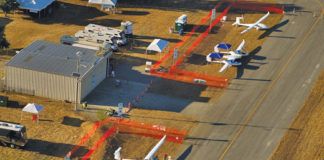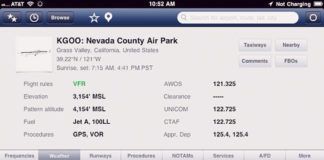In the 24 months that Ive written this column, one topic has come up almost as often as the term Light Sport Aircraft (LSA)-understanding and maintaining the 900-series Rotax engines that are far and away the most popular choice for this new breed of aircraft. The three Rotax four-stroke engines (80-hp 912, 100-hp 912S and 115-hp turbocharged 914) and their uncertified (UL) versions are unlike Lycomings, Continentals and auto engines. Rotax heads are liquid-cooled, and the cylinders rely on air cooling. The dry-sump oil system uses crankcase pressure (about 7 psi) to force oil back into an external tank before being pumped into the engine (using a conventional pump) for pressure lubrication.
A gearbox equipped with a shock absorber and overload clutch reduces engine rpm (by a 2.43:1 ratio in the 912S) to drive a large, efficient propeller. Dual breakerless capacative-discharge units excite the dual spark plugs. Two altitude-compensating carburetors provide efficient use of the recommended auto fuel (unleaded regular for the lower-power 912 and premium for the 912S).
Rotax has a reputation for improving its products and operating procedures, which has resulted in highly detailed procedures for engine installation, operation and inspection plus specific recommendations for consumables such as fuel, oil and coolant.
Back to School
For all of these reasons, Rotax has designed a series of training courses that its retailers and maintenance centers are encouraged to offer. Lockwood Aviation Supply is a leading Rotax dealer and overhaul center in the U.S., and owner Phil Lockwood had set up Rotax courses before the final factory-approved courses were completed. Tim Kern attended one of the older courses and reported on it in the July 07 KITPLANES. The Rotax Service Training session I attended this year was a combination of the older version and the newer material.
The entry-level service course is intended for owners of Rotax 912/914-equipped aircraft, operators and renters, and it also provides basic information for homebuilders who will be installing a Rotax in their new aircraft. It is also the prerequisite for the maintenance and heavy maintenance courses, which deal not only with maintenance but also with engine teardown and complete overhauls. All three courses run two days and cost $455 each. At Lockwoods facility in Sebring, Florida, participants are taught by Dean Vogel of Aero Technical Institute, which is associated with Lockwood Aviation Supply.
Lets Get Started
Fifteen of us-a full class-gathered to learn about Rotaxes. Some were already flying 912s in their LSAs or homebuilts. Others work at an FBO and will maintain Rotaxes for their customers after completing an advanced course. A few were working on a homebuilt that will be equipped with a Rotax. Vogel listed primary course goals: enhancing safety, teaching students to find and interpret the information correctly, and developing the students confidence.
We each received Rotax manuals on operation, installation and maintenance, and Vogel provided web site addresses for keeping up with changes (www.rotax-aircraft-engines.com is a primary reference). We also received reprints of magazine articles by Lockwood on Rotax 912 installation.
We learned about the cooling system and what to use in it (Evans waterless coolant because of its high boiling point or Dex-Cool diluted 50% with distilled water). The coolant system is important but not flight-critical. For up to an hour, the engine should run without liquid coolant to the heads. But to protect the engine, you would want to land immediately if you lost coolant.
More critical than coolant is engine oil, which also lubricates the gearbox. We spent considerable classroom time on the oil system and how to service it. Because the oil is held in its external tank, it is drained from the tank rather than the crankcase. Vogel recommended removing the oil tank and cleaning it, and he showed us how to do it. Most systems include an oil cooler, which should be mounted with at least the outlet at the top so that air cannot be trapped.
Specific oils and their replacement times are based on the fuel used. Unleaded auto gasoline allows 100 hours between changes with either petroleum or synthetic oil. Because of the high lead content in 100LL avgas, however, its use precludes synthetic oils because they don’t scavenge excess lead well. With 100LL, even using natural oil results in shorter recommended oil change intervals. (Heres another point if using 100LL avgas: The gearbox overload clutch should be overhauled at 600 hours. Without the lead, it should go longer.) Its important to use genuine Rotax oil filters, as they include a required flapper valve.
The magnetic plug on the engine should be removed and checked for metal at each oil change, and its not easy. It requires a No. 40 Torx bit, a wobble extension to get at it and a hand impact driver tapped with a 12-ounce ball-peen hammer. The plug should be torqued (210 inch-pounds) and safety-wired.
New engine installation requires mechanical and pneumatic setting and synchronizing the two Bing carburetors; its recommended to check sync during 100-hour inspections. We did it to a new Flight Design CT. We first set equal slack on the pair of throttle cables, which is part of the 12-step mechanical procedure. Then we attached a pair of pneumatic gauges to the two carbs via the crossover tube and ran the engine at idle. Its a back-and-forth procedure between the mechanical and screwdriver adjustments at several rpm settings. Rotax recommends a minimum of 1800 rpm at idle, but thats too high for some smooth airplanes such as the CT. On it, we set 1650 rpm, and the pilot must remember to taxi at 1800 rpm minimum and use wheel brakes as required. Brake linings, somebody noted, are a lot cheaper than gearbox repairs. Pulling the gearbox from the engine, incidentally, requires a special tool.
Many More to Cover
We learned to avoid paper fuel filters, that the thickness of the fuel pump gasket will affect pump pressure (use the right one), how to service reusable K&N air filters, and that all soft stuff including O-rings and hoses must be replaced at five-year intervals or sooner as required. We walked through the periodic service table in the maintenance manual and took notes on items such as recommended torques and spark plug gaps. We also learned that pistons and cylinders are made of the same aluminum alloy, so they expand and contract together; a ceramic coating on the cylinders precludes wear. A rubber strip protects the bottom of the coolant expansion tank. Spark plugs on opposing cylinders fire together, but one is a wasted spark because its not on a compression stroke. Therefore, all eight plugs fire once per revolution.
There is a lot more to the Rotax Service Training than can be listed here. My classmates said the course was well worth the time and money, and several proceeded to take the more advanced courses.
Vogels Plea
Ill end with an unsolicited comment from our esteemed instructor: Guys with enough money to buy a $100,000 airplane should fund their grandchildrens flight training. Its worth a thought.
For more information including class openings, visit www.aerotechnical
institute.com or call 863/655-7373.
Find a direct link at www.kitplanes.com.




